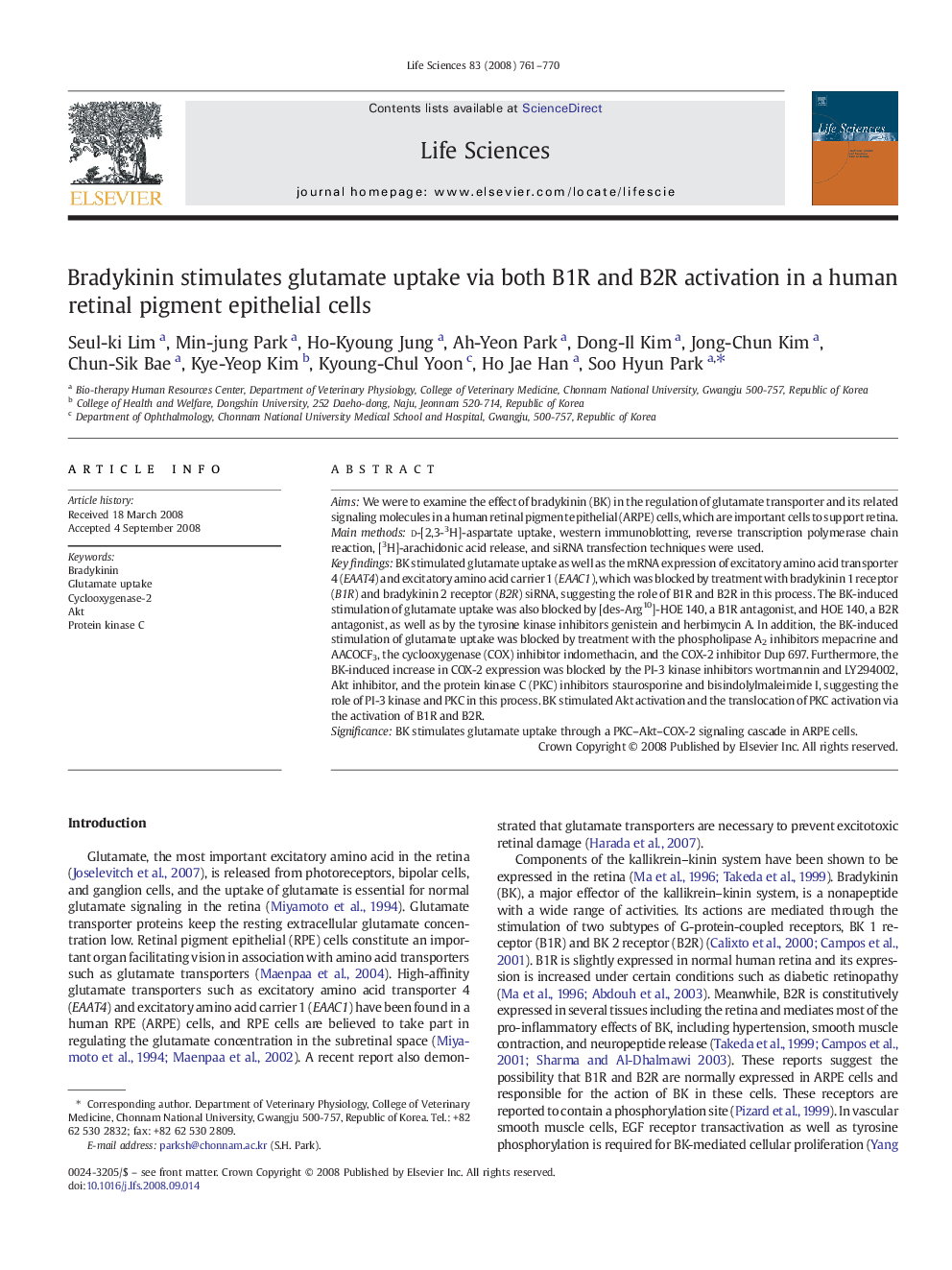| Article ID | Journal | Published Year | Pages | File Type |
|---|---|---|---|---|
| 2552757 | Life Sciences | 2008 | 10 Pages |
AimsWe were to examine the effect of bradykinin (BK) in the regulation of glutamate transporter and its related signaling molecules in a human retinal pigment epithelial (ARPE) cells, which are important cells to support retina.Main methodsd-[2,3-3H]-aspartate uptake, western immunoblotting, reverse transcription polymerase chain reaction, [3H]-arachidonic acid release, and siRNA transfection techniques were used.Key findingsBK stimulated glutamate uptake as well as the mRNA expression of excitatory amino acid transporter 4 (EAAT4) and excitatory amino acid carrier 1 (EAAC1), which was blocked by treatment with bradykinin 1 receptor (B1R) and bradykinin 2 receptor (B2R) siRNA, suggesting the role of B1R and B2R in this process. The BK-induced stimulation of glutamate uptake was also blocked by [des-Arg10]-HOE 140, a B1R antagonist, and HOE 140, a B2R antagonist, as well as by the tyrosine kinase inhibitors genistein and herbimycin A. In addition, the BK-induced stimulation of glutamate uptake was blocked by treatment with the phospholipase A2 inhibitors mepacrine and AACOCF3, the cyclooxygenase (COX) inhibitor indomethacin, and the COX-2 inhibitor Dup 697. Furthermore, the BK-induced increase in COX-2 expression was blocked by the PI-3 kinase inhibitors wortmannin and LY294002, Akt inhibitor, and the protein kinase C (PKC) inhibitors staurosporine and bisindolylmaleimide I, suggesting the role of PI-3 kinase and PKC in this process. BK stimulated Akt activation and the translocation of PKC activation via the activation of B1R and B2R.SignificanceBK stimulates glutamate uptake through a PKC–Akt–COX-2 signaling cascade in ARPE cells.
